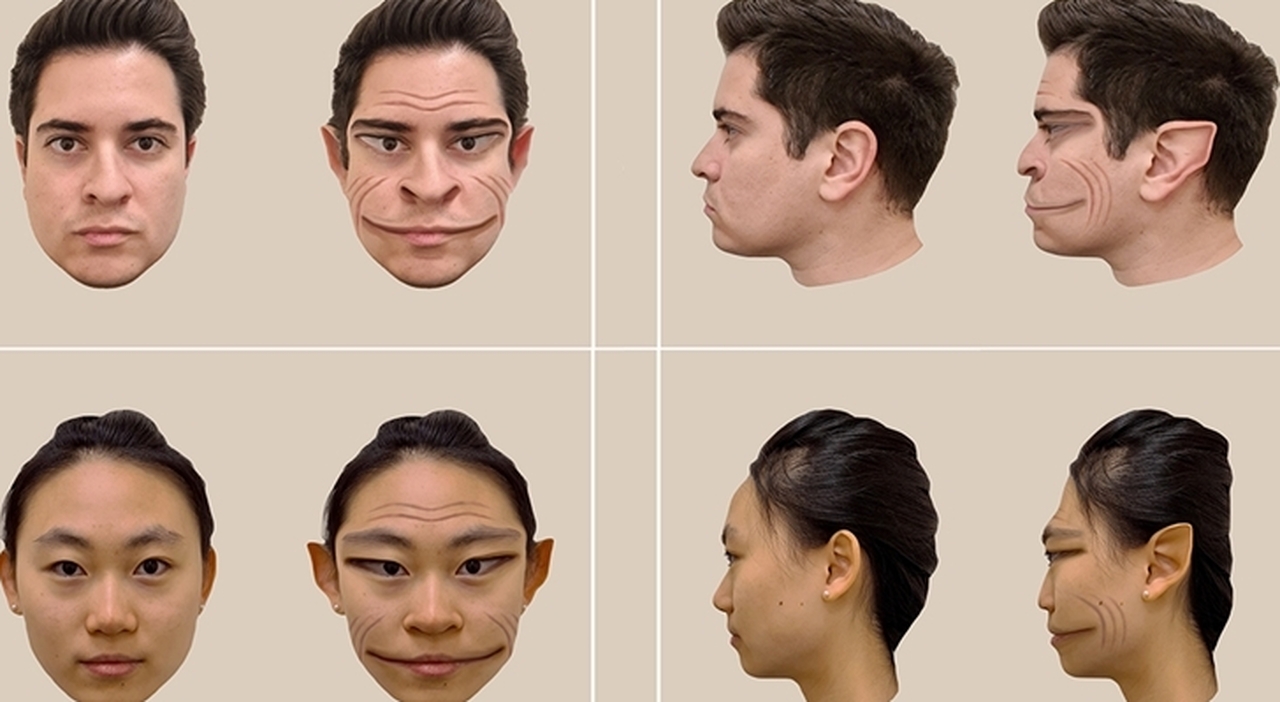Seeing the devil can be a reality for some, whenever they find themselves looking at another person’s face. This happens to those affected by prosopometamorphopsia, or Pmo, an extremely rare condition that alters the perception of others’ facial features. For the first time, thanks to research, we have the opportunity to see the world through the eyes of those living with this syndrome. The prestigious scientific journal ‘The Lancet’ shared the images, describing the “unique case” of a PMO patient who perceives people as “demons” when he looks at them directly, but sees them in their real form when he observes their photos. Through his story, the authors of the study were able to illustrate these “diabolical visions” which for the 58-year-old man represent a real waking nightmare, similar to living in a horror film.
What is prosopometamorphopsia
Prosopometamorphopsia – a term of Greek etymology, where “prosopo” stands for face and “metamorphopsia” for distorted vision – is a rare disease whose symptoms can last “days, weeks or even years”, explain the researchers of Dartmouth College citing a website dedicated to the syndrome, and vary from patient to patient: they can influence the shape, size, color or position of the facial features you look at. The one published in the “Clinical Images” section of the Lancet is described as “the first study to provide accurate and photorealistic visualizations of the facial distortions experienced by a person with Pmo” when observing others. While “most PMO patients see faces distorted in every context”, whether they look at them live or in photos, the man protagonist of the new work “sees faces without distortions when he views them on a screen or on paper – they specify scientists – but they appear “demonic” to him if he observes them in person.” The researchers seized the opportunity, “recruiting” him for their experiment. First they photographed a person’s face and then, while the patient looked at the same person’s face, they showed him the photo on a computer.
Elsevier Ltd
The diagnosis of schizophrenia
In this way the scientists received real-time feedback from the patient on how the traits observed on the screen differed from those seen in real life. And guided by him, like policemen dealing with the sketch of a identikit, thanks to software they modified the photograph so as to show the world what prosopometamorphopsia sufferers see. And they really see it, the authors assure. «Several people suffering from Pmo, visited by psychiatrists, told us that they had received a diagnosis of schizophrenia and had taken antipsychotics. When theirs is not a mental problem, but rather a visual system problem”, points out Brad Duchaine, professor of psychology and brain sciences, researcher at Dartmouth’s Social Perception Lab and senior author of the study whose lead author is Antônio Mello, doctoral student of the Department of Psychological and Brain Sciences from Dartmouth. “And it is not uncommon – Duchaine remarks – that people with PMA do not talk to others about how they see faces for fear that they will consider it a sign of a psychiatric disorder.” With this research, the authors hope to make people understand that prosopometamorphopsia exists and what it is, raising awareness among the public and the medical community.
© ALL RIGHTS RESERVED
